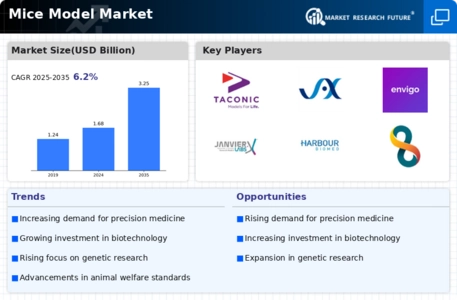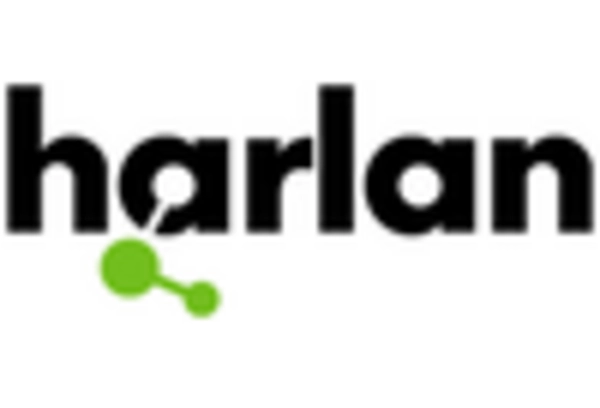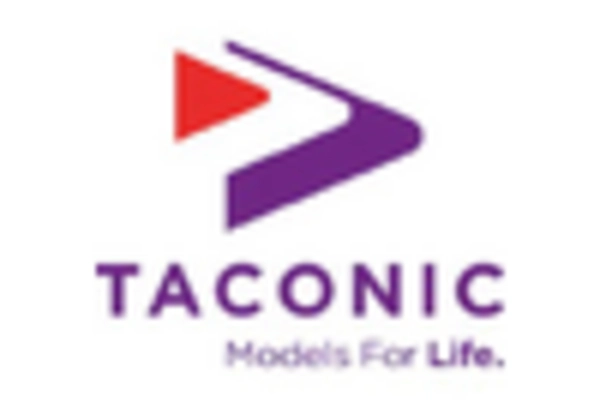Rising Demand for Drug Discovery
The Mice Model Market is experiencing a notable increase in demand for drug discovery processes. As pharmaceutical companies strive to develop new therapeutics, the reliance on mice models for preclinical testing has intensified. In 2025, the market for drug discovery is projected to reach approximately 50 billion USD, with a significant portion attributed to the utilization of mice models. These models provide critical insights into pharmacokinetics and pharmacodynamics, thereby enhancing the efficiency of drug development. Furthermore, the ability to simulate human diseases in mice allows researchers to identify potential drug candidates more effectively. This trend indicates a robust growth trajectory for the Mice Model Market, as the need for innovative therapies continues to rise.
Increased Focus on Cancer Research
The Mice Model Market is significantly influenced by the heightened focus on cancer research. With cancer remaining one of the leading causes of mortality, researchers are increasingly utilizing mice models to study tumor biology and test novel treatment strategies. In 2025, it is estimated that cancer research will account for over 30% of the total research funding allocated to preclinical studies. Mice models enable scientists to investigate the efficacy of new drugs and therapies in a controlled environment, thereby accelerating the pace of discovery. This growing emphasis on cancer research is likely to drive demand for specialized mice models, further propelling the Mice Model Market forward.
Regulatory Support for Animal Research
The Mice Model Market is positively impacted by regulatory support for animal research. Regulatory bodies are increasingly acknowledging the necessity of animal models in the drug development process, which has led to streamlined approval processes for studies involving mice. In 2025, it is anticipated that regulatory frameworks will continue to evolve, providing clearer guidelines for researchers. This supportive environment encourages investment and innovation within the Mice Model Market, as companies and institutions feel more confident in pursuing studies that utilize these models. The alignment of regulatory policies with scientific needs is likely to foster a more robust market for mice models in the coming years.
Growing Investment in Biomedical Research
The Mice Model Market is experiencing a surge in investment directed towards biomedical research. Governments and private entities are recognizing the importance of animal models in understanding complex biological processes and developing new therapies. In 2025, funding for biomedical research is projected to exceed 100 billion USD, with a considerable portion allocated to studies involving mice models. This influx of capital is likely to enhance research capabilities and foster innovation within the Mice Model Market. As more resources become available, researchers can explore novel applications and refine existing models, ultimately contributing to the advancement of medical science.
Technological Advancements in Mice Models
The Mice Model Market is benefiting from rapid technological advancements that enhance the capabilities of these models. Innovations such as CRISPR gene editing and advanced imaging techniques are revolutionizing the way researchers utilize mice in their studies. In 2025, the market for genetically modified mice is expected to grow by approximately 20%, reflecting the increasing adoption of these technologies. These advancements allow for more precise modeling of human diseases, leading to improved translational research outcomes. As researchers seek to leverage these technologies for better experimental results, the Mice Model Market is poised for substantial growth, driven by the demand for more sophisticated and reliable models.


















Leave a Comment